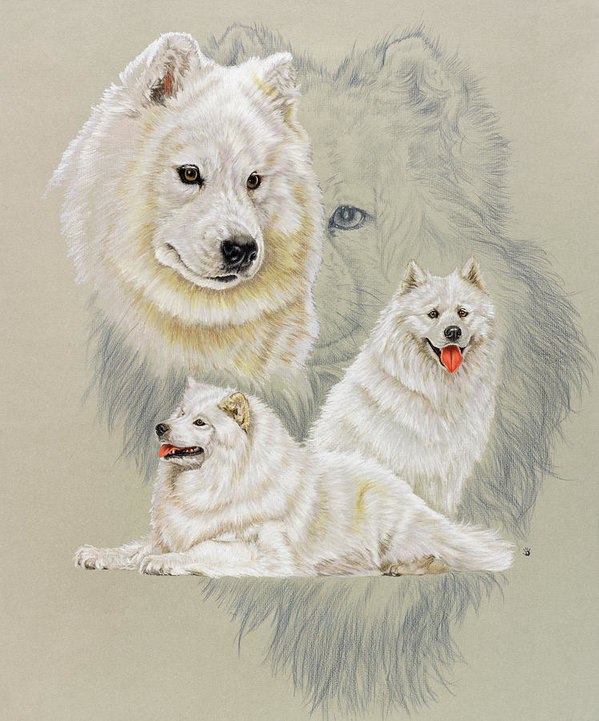
The first Samoyed officially registered by the AKC in the United States was a dog named Moustan of Argenteau. As the story goes, a Belgian princess named Rosalie de Mercy Argenteau attended a dog show in St. Petersburg, Russia in 1901 where she saw a Samoyed. The dog, named “Moustan,” was owned by a Russian grand duke, a brother to the Czar.
The duke, it seems, was as smitten with the princess as she was with the dog, and with presumed stars in his eye, the Duke gave Moustan to the princess. We don’t know if the duke and princess ever had a relationship to speak of, but four years after they met, the princess relocated to New York in 1905 – not long after marrying American, Jack Bonavita, a one-armed lion tamer (you can’t make this stuff up). And so it was that Moustan became the first Samoyed registered by the AKC.
Information about the first example of the breed in England is a bit more confusing. “Antarctic Buck” is often said to be the first Samoyed in England, and England’s Kennel Club certainly regarded it as at least one of the dogs that established the breed in the UK. “Antarctic Buck” (it writes) “was a survivor of Carsten Borchgrevink’s expedition and had been discovered in Sydney Zoo and brought to the UK by Mr Kilburn-Scott.”
A 1909 article from “The Queen,” the Lady’s Newspaper of England, suggested otherwise. It wrote: “The breed was first introduced into England by Mr. Kilbourn-Scott, a member of the Royal Zoological Society – in 1889, his first dog being bought from a tribe of Samoyeds in Archangel province in northwest Russia…”
This Sammy was named “Sabarka” (not Antarctic Buck).
Other sources we found concur that the brown and white Sabarka was the first foundation dog for the breed in England. Purchased by Kilbourn-Scott in Archangel, Russia in 1889, Sabarka was a gift for his wife, Clara.
The more we dug, however, the more we came to believe that the sources were all correct, but perhaps in a different order.
During the time that Kilburn-Scott and his wife lived in Australia (1907-1910), they became aware of the fact that most of the former sledge dogs returning from Antarctic expeditions were subjected to long, difficult quarantines that often ended in their deaths, and some ended up as exhibits in zoos in New Zealand and Australia. The Kilburn-Scotts acquired some of these dogs and returned to England with them; one of them was a large white dog named (wait for it) – Antarctic Buck whom they’d gotten from the Sydney zoo. Sadly, Antarctic Buck died of distemper after coming to England but he had sired litters. At least five of his puppies survived to become part of the early breed history in the UK.
There is no doubt that Ernest Kilburn-Scott was a significant influencing factor in the breed outside of Siberia. A member of the Royal Zoological Society, he grew the breed in England, and his participation in several expositions brought attention to the Samoyed. He founded the Samoyed Club in England, wrote the breed standard, and was responsible for the name, Samoyede, becoming the official breed name outside of Siberia after conferring with explorers of Siberia on how to pronounce and spell the word (a reference to the people associated with the dogs).
We can’t conclude without mentioning something that muddies any clarity we thought we had. It’s said that in 1866, Otto von Bismarck, Chancellor of Germany, sent Edward, Prince of Wales (later King Edward VII), a dog simply described as “a Russian dog,” but most probably a Samoyed, and some believe that dog was probably the first Samoyed in England. We continue to look into it, but what is not disputed is that Edward’s wife, Queen Alexandra, became an ardent fan of the Samoyed, and it’s said that descendants of her dogs are in the pedigrees of many English and American Samoyeds today.
Image: Samoyed by Barbara Keith
http://barbara-keith.fineartamerica.com
http://barbara-keith.artistwebsites.com/
http://www.redbubble.com
http://www.zazzle.com/barbbarcikkeith
